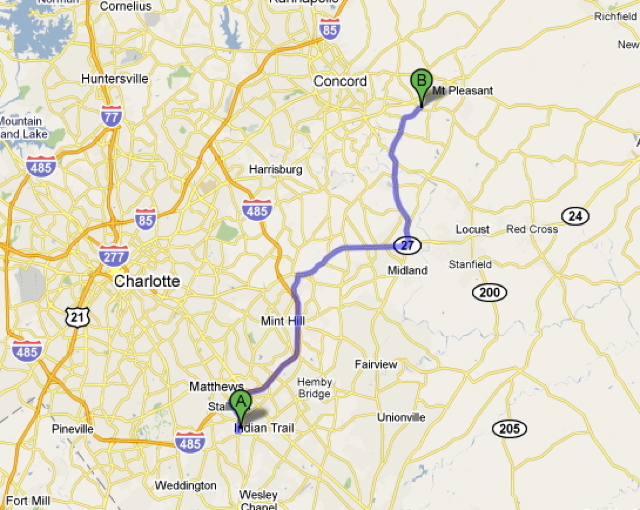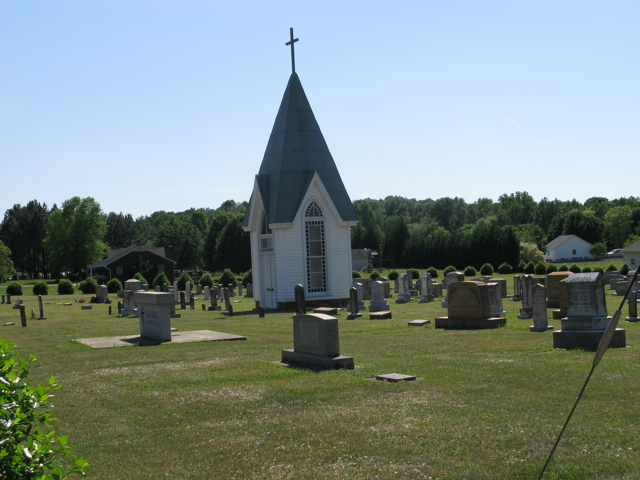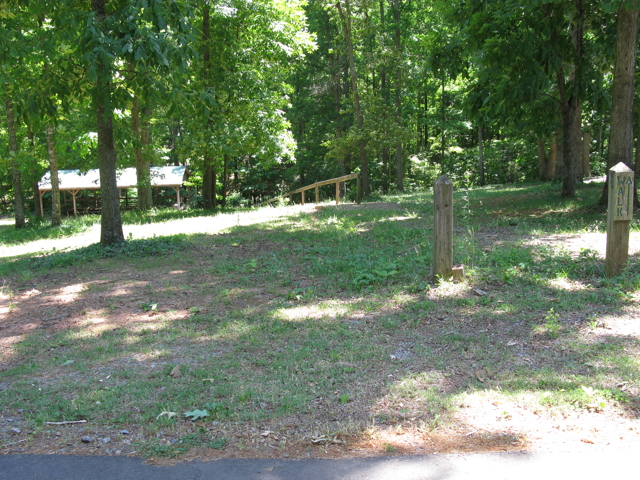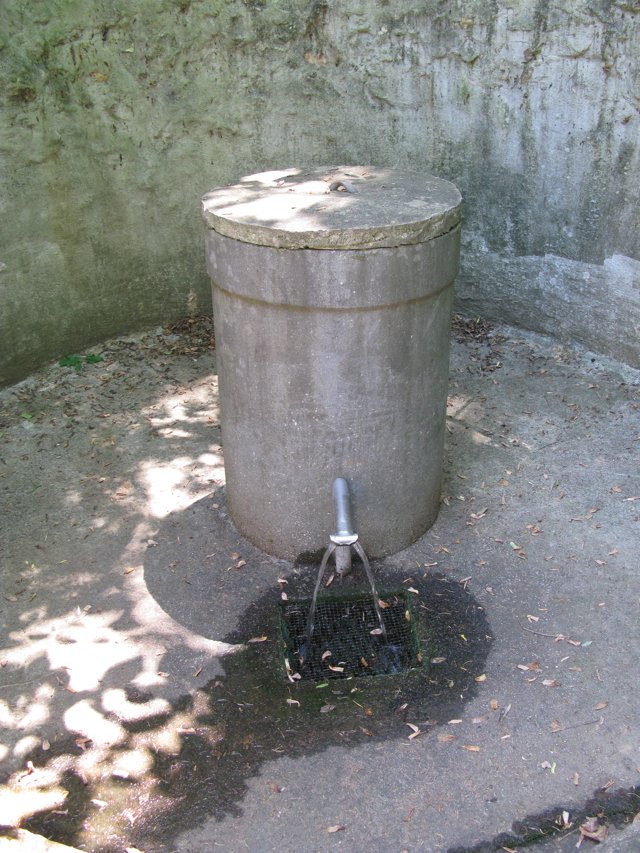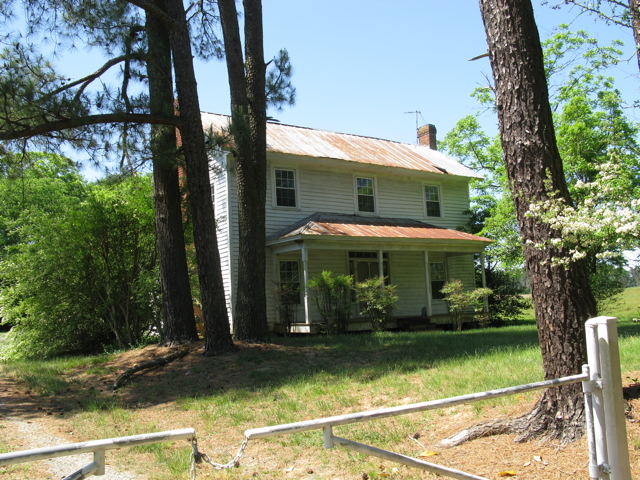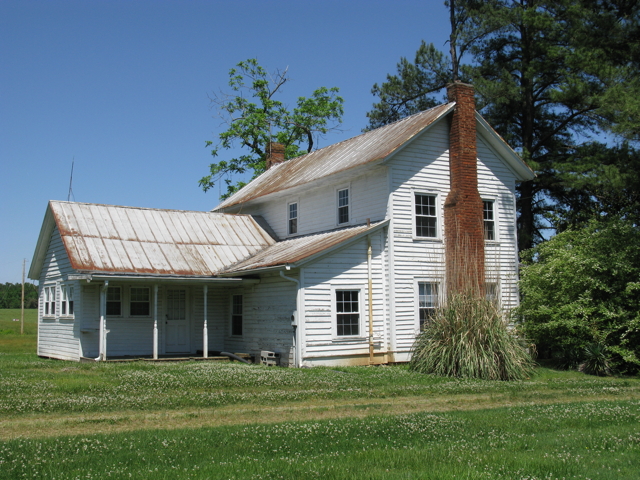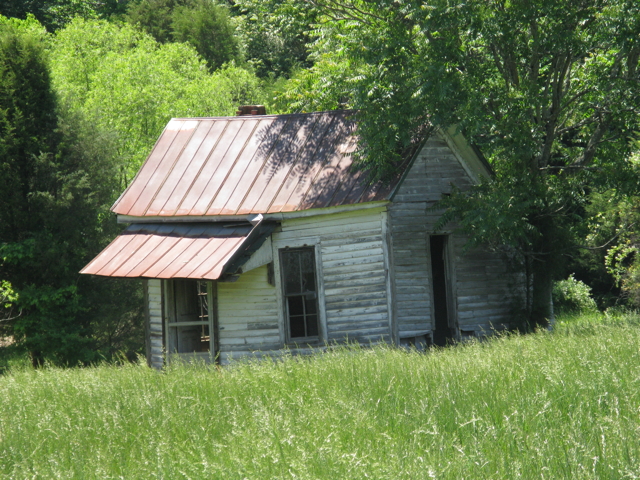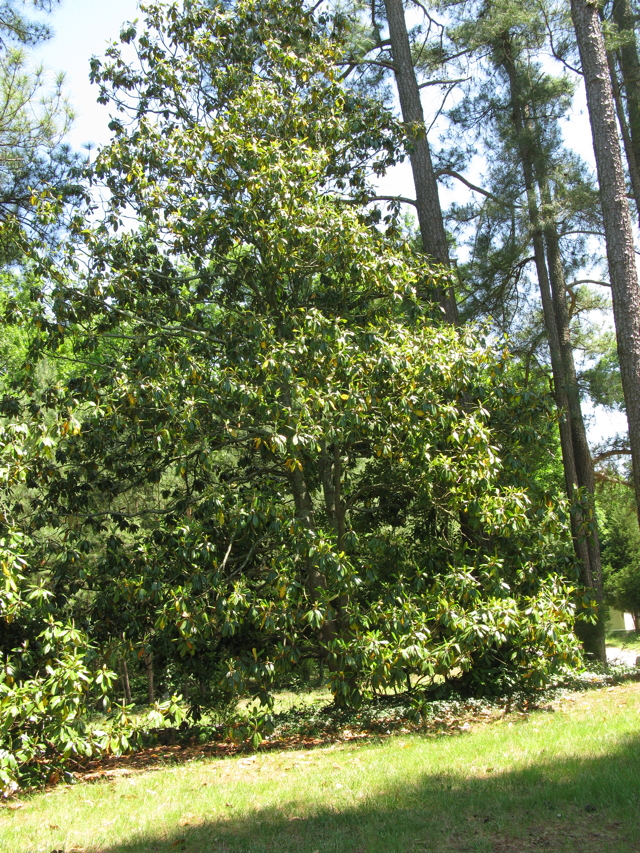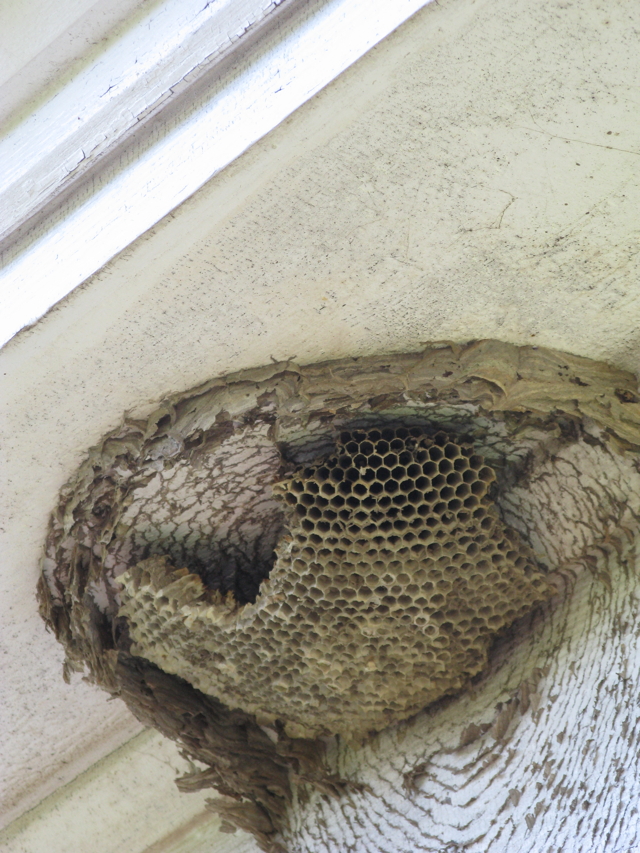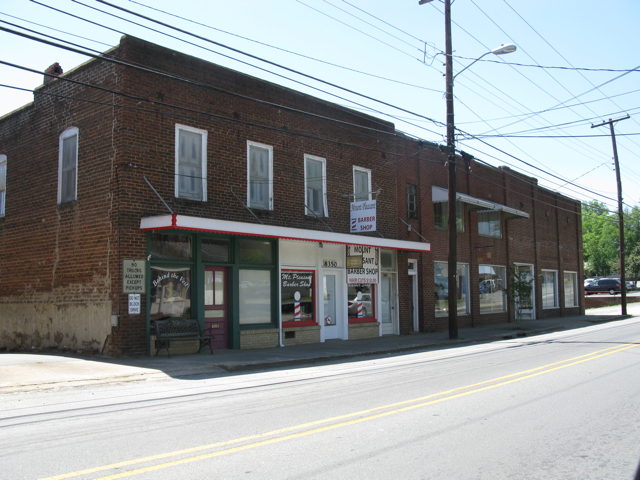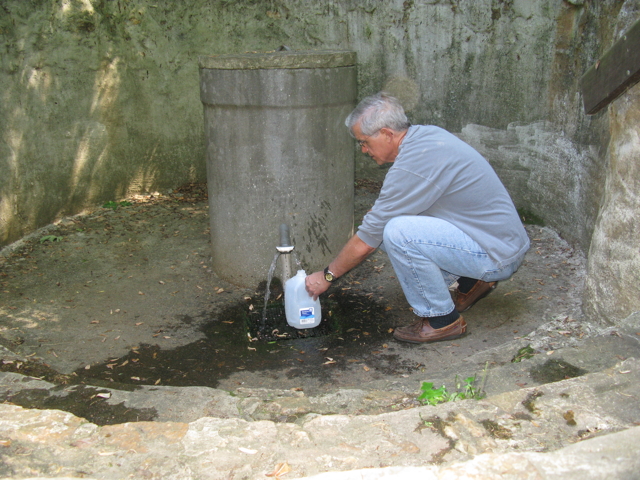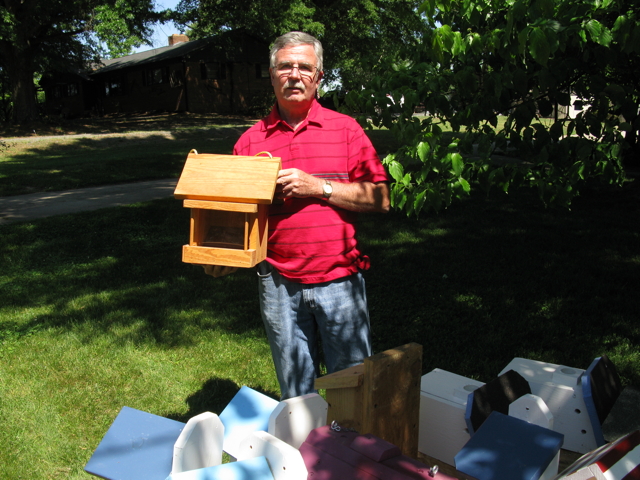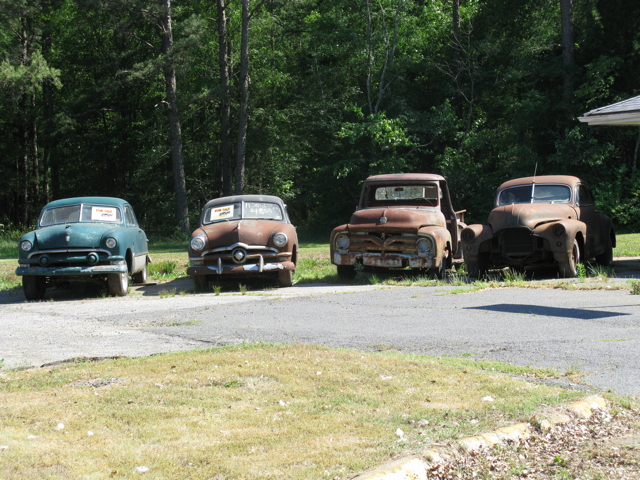Cold Spring is located behind Cold Springs United Methodist Church and the water is free for the taking. The church has a traditional Southern "supper on the grounds" pavilion right by the spring, and all the grounds are neat and well maintained. The spring runs 24 x 7 x 365—one long-time resident of the area I talked with said he'd never known it not to run, even in periods of severe drought. The spring is down in a low place behind the church with hills rising up behind it. I can only assume that the high water table in the hills keeps pushing the water out at the low place. It is a beautiful, quiet place. The church has constructed a sort of grotto with a reservoir out of which the spring runs from two outlets.
Armed with all the jars and containers I had on hand, I set out after church this morning to get some real live spring water and had a pleasant afternoon in Mt. Pleasant. I've included more pics and movies than you want to see—but hope you enjoy your virtual tour.
Here's where Mt. Pleasant is located in relation to Matthews, near where I live:
This is Cold Springs United Methodist Church, a modern facility that stands on the grounds of the original church. I was surprised at how big the church is for the rural area in which it is located.
The church cemetery across the street—not sure of the purpose of this interesting structure in the cemetery:
This sign behind the church points the way to the spring. The church's web site indicates that people stopped for water at this spring as far back as the 1830's—and probably before. I assume "the 1830's" is as far back as written records exist:
Behind the church, looking down toward the spring. The hand rail is alongside steps that lead down to the spring and the supper pavilion:
Isn't this nice? Shady, cool, and not a sound except for the gurgling of pure water coming out of, and going back into, the ground. The stone work around the spring looks to be at least 50 years old:
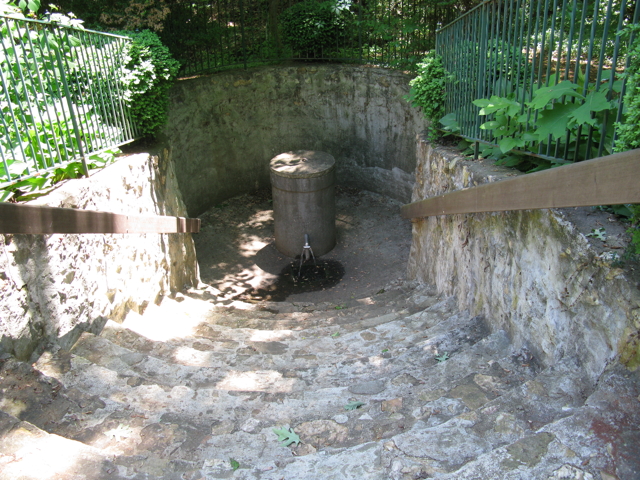
This concrete cistern, I assume, goes down into the ground a ways and captures the water from the spring and channels it into the outlet pipe. The two outlets empty into a drain that runs somewhere—perhaps into a small creek that runs behind the spring? This reminds me of a cabin in the mountains outside West Jefferson, NC, where my son and his wife lived for a while (and where their first child was born). Water for the cabin flowed downhill through a pipe from a spring on the side of the mountain behind the cabin, into a pressurized bladder (holding tank) in the house, which then fed the kitchen and bathroom with water. That water also filled the large birthing tank set up in the cabin in which their first child was birthed. Being born in that mountain spring water probably accounts for Ellen's sweet disposition! :-)
The sounds of running water:
I filled up all the containers I brought with me—probably three gallons total:
I was so impressed that I decided, "I need more containers." So I set off looking for Mt. Pleasant to find a grocery store and saw more than one abandoned homestead:
While I was wandering around looking for Mt. Pleasant, I came across this repository of memories standing like a sentinel, a reminder of times past, on an abandoned farm. Who sat on this porch, and what did they talk about?
I'm speculating here, but I'm sure this house started as most old farm houses of this era did, as a two-story rectangle with chimneys on both ends. Sometime later, as resources allowed, the two sections in the rear were added—either at two different times (my guess) or at the same time. I'm thinking the smaller one was a bathroom (there would have been an original outhouse, separate from the main house), the larger a kitchen—most of the windows had blinds and I couldn't see in; where I could see revealed that most of the interior had been gutted, hopefully in anticipation of refurbishing. But there was no sign of recent activity, sadly.
A small "house" standing in a pasture about a hundred yards from the main house:
A beautiful black walnut tree in the side yard:
It wouldn't be a Southern farm house without a magnolia in the front yard—there were two of them:
In time, prosperity brought black and white images sent through the air and viewed on an electric screen, around which a farm family gathered to be influenced in ways they couldn't have foreseen (and might have avoided if they'd known who and what they were inviting into their home):
Another icon of abandoned farm houses: a hornets nest. While this one has been mostly removed, you can see the size of it by the stains, like tree rings, on the siding under the eave of the house:
I finally found Mt. Pleasant—a few shots of "downtown." The office of the local barrister:
Not sure what happened in 1929—perhaps Mr. Moose passed on and left the store to another:
The main business district:
I found a Food Lion, bought six gallon jugs of some kind of filtered water, poured out the water and took the jugs back to capture more spring water. (I know, I know—it's just the way I'm wired. I didn't drive all the way to Cold Spring to bring back tacky Food Lion water. I wanted the natural minerals from the spring water which are absent from distilled and reverse osmosis bottled water.)
On my way back to the spring, I passed a lovely house with bird feeders and bird houses for sale in the front yard. (Note the large "box" hanging underneath the table—it's the payment box.)
If the owner/builder, Troy Miller, hadn't been home, I would have obeyed the sign on his table and put my money in the slot (vertical slot beneath the word "cleaning"). Nice to know the honor system lives on in rural America:
Fortunately, Troy was home and we had a nice chat, and I bought this great bird feeder from him. He said he didn't think anyone had ever taken a bird house without paying. He found an I.O.U. in the box one time—it was from his daughter, who lives next door. :-)
I returned to the spring and filled up my six gallon jugs and made it home with about 10 gallons of wonderful water. On the way out of Mt. Pleasant, I saw these four monuments. The second from the left is a 1949-1950 era Ford. My family had one of these—a "ragtop" (convertible) when I was around 5-6 years old (around 1953) in Decatur, Alabama. My dad grew up in a car-business family and loved cars. Our beige '49-'50 Ford convertible was pretty snazzy for its day. These looked a little worse for wear. But they're available. Let me know if you want directions. :-)
A pleasant afternoon at Cold Spring in Mt. Pleasant, North Carolina. If I can rustle up some of those BIG blue-colored water jugs that you see in offices, etc., I'll probably go back for another load. I don't know who is behind the findaspring.com site, but I'm thankful for their efforts.

